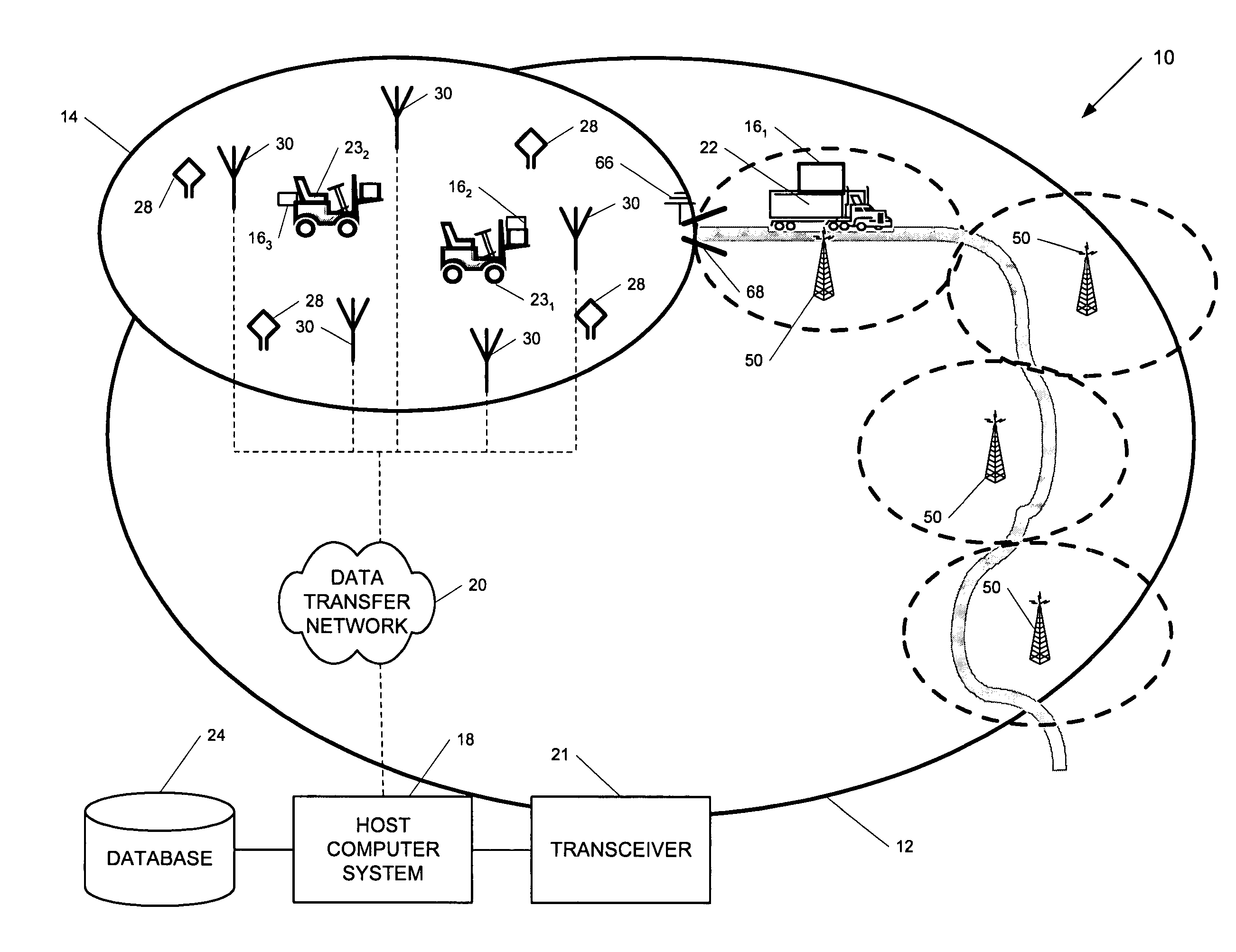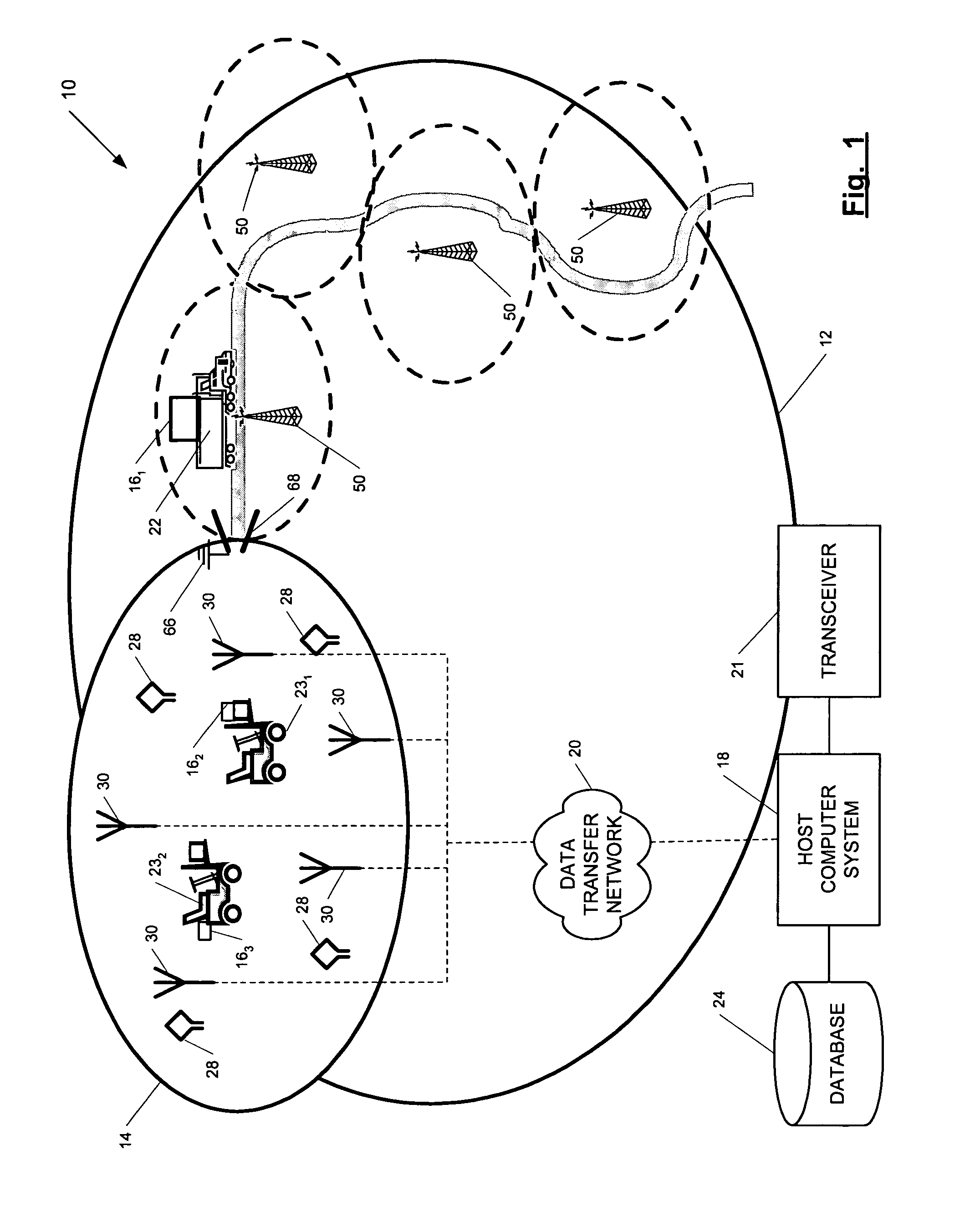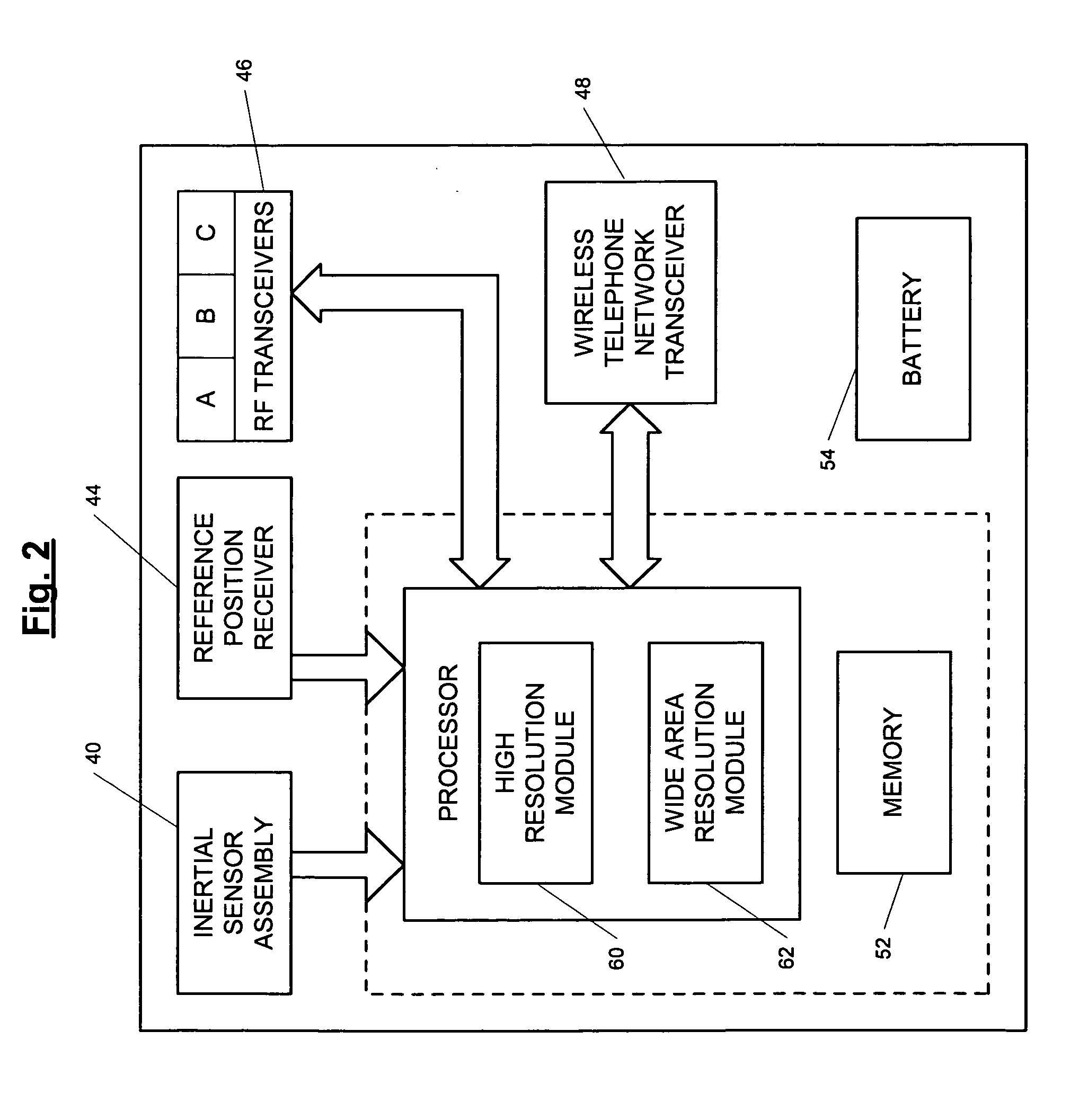Position-tracking system
a position tracking and position technology, applied in the direction of navigation instruments, instruments, electric signalling details, etc., can solve the problems of unreliable location tracking indoors or in other environments, system limitations, and ineffectiveness of gps systems, so as to improve accuracy, improve accuracy, and accurately estimate the position and velocity of objects
- Summary
- Abstract
- Description
- Claims
- Application Information
AI Technical Summary
Benefits of technology
Problems solved by technology
Method used
Image
Examples
Embodiment Construction
[0020]FIG. 1 is a diagram of a position-tracking system 10 according to various embodiments of the present invention for tracking the position of one or more mobile objects in real-time (i.e., within a small response time) as the objects travel about. The tracked objects may be any tangible object that is capable of moving, whether by its own mobility system or because it is capable of being transported by other means, such as conveyor belts, vehicles, lifts, persons, etc. Accordingly, the tracked objects may be goods, containers or supports for goods, vehicles or equipment for moving goods, etc. Also, the tracked objects or goods may or may not have RFID tags. That is, the position tracking system described herein may be used in conjunction with RFID technology or in lieu of it.
[0021]The tracking system 10 tracks the position of the objects as they travel through areas, such as area 12, where very high position location resolution is not needed, and areas, such as area 14, where hi...
PUM
 Login to View More
Login to View More Abstract
Description
Claims
Application Information
 Login to View More
Login to View More - R&D
- Intellectual Property
- Life Sciences
- Materials
- Tech Scout
- Unparalleled Data Quality
- Higher Quality Content
- 60% Fewer Hallucinations
Browse by: Latest US Patents, China's latest patents, Technical Efficacy Thesaurus, Application Domain, Technology Topic, Popular Technical Reports.
© 2025 PatSnap. All rights reserved.Legal|Privacy policy|Modern Slavery Act Transparency Statement|Sitemap|About US| Contact US: help@patsnap.com



